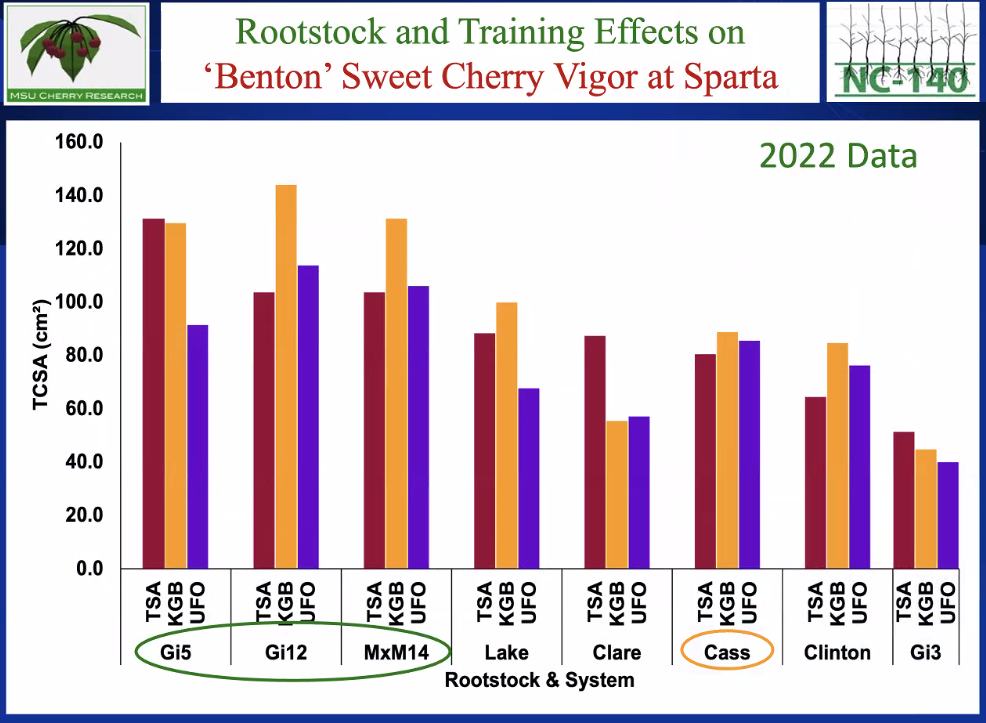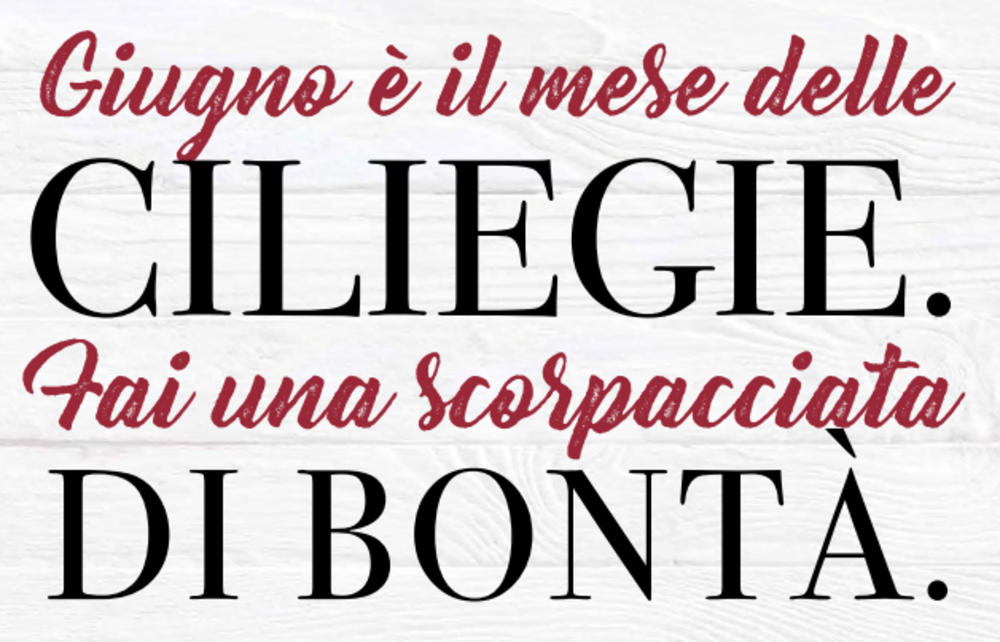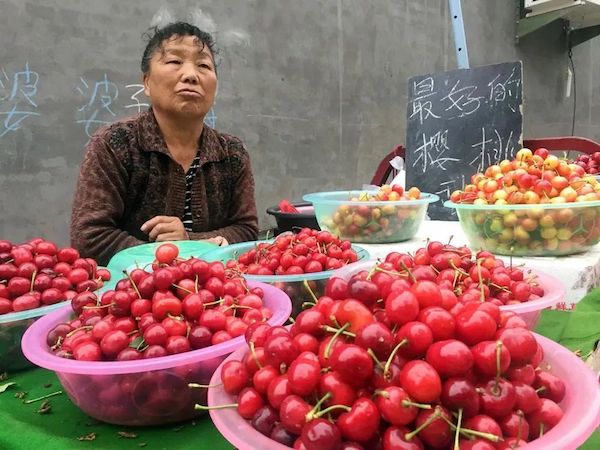During a webinar organised by Cornell University and titled 'Stone fruit: rootstocks and desease management', Michigan State University (MSU) physiologist Prof. Greg Lang presented the recent results of his team's trials to define the behaviour of five new rootstocks for the sweet and sour cherry.
The MSU research group is collaborating with an NC-140 research project that focuses on the north-central region of the USA and aims precisely at evaluating and identifying new rootstocks for the cherry tree. Prof. Lang presented the results of their comparisons for the 2022 vintage.
As is known, rootstocks are able to influence many cherry tree performances: productivity, earliness, tree size, tree architecture, fruit size and quality. Since 2017, MSU's team has been comparing the performance of Cass, Clare, Clinton, Crawford and Lake (all from the Corette® series), early dwarfing rootstocks developed by the university itself, with reference rootstocks Gisela 5, Gisela 12, Gisela 3 (sweet cherry only) and Maxma14.
Corette® series rootstocks under test (data 2022)
With regard to the sweet cherry, trials were carried out with Benton varieties, which are self-fertile, vigorous and ripen a few days earlier than Bing in the north-western part of the USA, but flower later. Different rootstocks were compared, bred using three different forms: Kym Green Bush (KGB), Tall Spindle Axe (TSA) and Upright Fruiting Offshoots (UFO).
The researchers carried out comparisons at two locations in Michigan then in New York, Idaho and Colorado. Unfortunately, no data were submitted for Colorado due to bad weather, while in Idaho the trials were interrupted due to the retirement of a researcher. Cass, Clare, Clinton and Lake rootstocks were compared with Gisela 5, Gisela 12, Gisela 3 and Maxma 14.
In season '22, the results at the research station in Sparta (Michigan) showed that Gisela 5 produced the most vigorous cherry, compared to the others in comparison, when bred in TSA. Gisela 12, on the other hand, was the most vigorous for the other two breeding systems, UFO and KGB. Sparta is an area with very fertile clay soils.
 Image 1.
Image 1.
With regard to the results at the experimental site in the North West, also in Michigan, it is the Cass rootstock that generally produces the most vigorous trees for the TSA system, while for the other two systems it is Lake that is the most vigorous. In general, comparing the two research stations, Sparta had more vigorous trees than the station in the North West where the rootstock has to contend with sandy soil.
In all trials three rootstocks, Clare, Lake and Cass gave rise to a major problem of shoots.
 Image 2.
Image 2.
"What we saw in 2022," Professor Lang summarised, "at the stations in Sparta and New York, the most vigorous trees were on Gisela 12 and Gisela 5. In Sparta, Maxma 14 also produced vigorous trees. The trees on Gisela 3 were the smallest, but there was a mistake: it turned out that the grafted variety, in that case, was not Benton but Rainier.
At the experimental station in the North West, there is great variability between the different rootstocks depending on the training system. Lake and Clare are more vigorous than Maxima 14 and Gisela 5. In New York, the trees on Lake and Clinton were quite similar to those on Maxma 14.
The trees on Gisela 3 are still the smallest, whichever location one considers. So, basically: in Michigan, the trees bred with the TSA and KGB system are the most vigorous or at least more vigorous than those in UFO. In New York, the trees bred with the KGB system are the most vigorous. Those with the TSA and UFO system, on the other hand, are similar'.
 Image 3.
Image 3.
MSU, still three years to go for comparisons
Looking instead at the 7-year trial and evaluating the vigour of the plants on the different rootstocks, Professor Greg Lang summarised the main results as follows: "In Sparta, where the soil is fertile, with Gisela 12 we had the most vigorous trees, with Gisela 3 the least vigorous. If we look at the production efficiency (2022-2023) it is the Clinton rootstock that gives the most efficiency while Maxma 14 is the least efficient.
 Image 4.
Image 4.
At the North West station, also in Michigan, where the soil is sandy, Clinton has the best production efficiency while Maxma 14 is the least efficient. We can say that Maxma 14 still has the worst production efficiency. Comparing the two locations, we see that the data shows that all rootstocks, going from Sparta to the North West station, give less vigour to the tree.
It excites Lake. Taking a look at the data from New York (2022-2023) instead: vigour values go up and down. Gisela 5 was the most vigorous, followed by Gisela 12 and Maxma 12. Production efficiency is always very low, the most efficient being Cliton'.
The work of comparing rootstocks will go on for at least another three years. The researchers want to put some firm points on the table. 'On the one hand,' Prof. Greg Lang concluded, 'we want to see whether Clinton's production efficiency will be confirmed. On the other hand, we noticed that when we compared the results from Sparta and the North West Station, there was no difference according to Lang.
This could mean that Lake is tolerant to the stress conditions that result from a sandy soil, but this is to be veerified. For Clare, Cass and Lake then the impact of excessive shoots formation needs to be determined'.
Barbara Righini
Images: Gregory Lang
Cherry Times - All rights reserved














